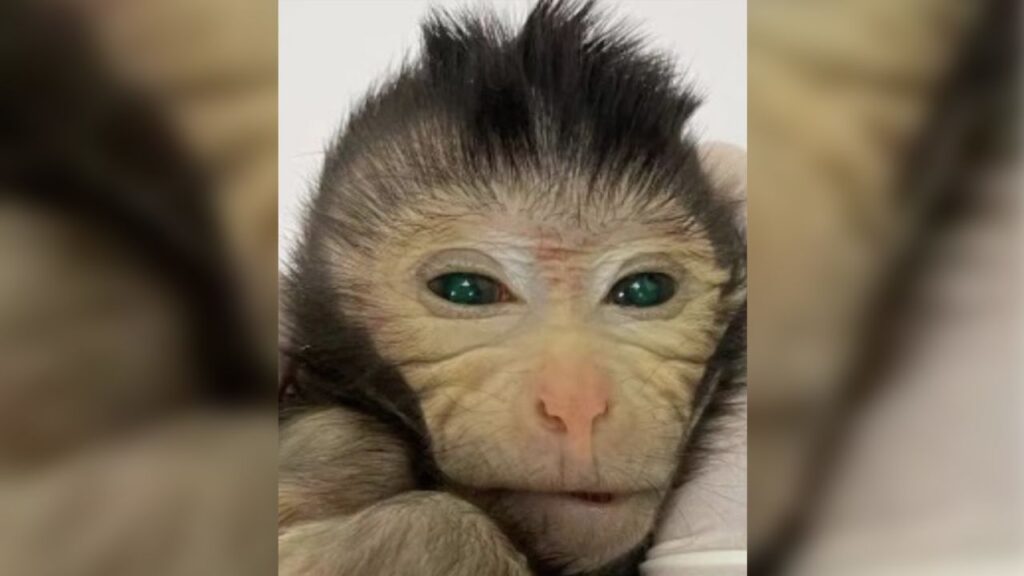11/11/2023
11/11/2023

NEW YORK, Nov 11, (Agencies): Scientists in China have successfully developed a monkey chimera with dual sets of DNA, a breakthrough that they believe holds potential benefits for medical research and endangered species conservation. The monkey, a cynomolgus monkey (also known as a crab-eating or long-tailed macaque), lived for 10 days before being euthanized. This experimental work involved combining stem cells from the monkey with a genetically distinct embryo from the same species. This achievement marks the world's first live birth of a primate chimera created with stem cells, according to the researchers.
Published in the scientific journal Cell, the proof-of-concept study revealed that the monkey was "substantially chimeric," with a significant ratio of cells derived from stem cells across its body. The researchers believe that this approach could prove valuable for modeling neurodegenerative diseases, especially given the substantial contribution of stem cells to the monkey's brain.
Study coauthor Miguel Esteban, from the Guangzhou Institute of Biomedicine and Health and BGI-Research Hangzhou, highlighted the potential significance of monkey chimeras for species conservation, particularly if achieved between different nonhuman primate species. The hope is that such chimeras, if they contribute to the germ line, could aid in breeding endangered species.
While the term "chimera" originates from mythical hybrid creatures in Greek myths, the creation of chimeric mice dates back to the 1960s, widely used in biomedical research. However, limitations with mice make the pursuit of monkey chimeras worthwhile, according to the scientists.
Zhen Liu of the Chinese Academy of Sciences, the senior study author, emphasized that the physiological similarities between humans and monkeys make the latter more suitable for modeling human diseases compared to mice. The controversial field of human-animal chimeras, containing both human and nonhuman cells, has also seen advancements, raising ethical considerations.
The researchers emphasized the adherence to Chinese laws and international guidelines governing nonhuman primate research. Critics, however, expressed concerns about the ethical implications and animal welfare, particularly as only one out of six live births had the desired genetic makeup and was euthanized after 10 days due to respiratory failure and hypothermia.
While some experts lauded the study's importance, others noted that certain aspects, such as the viability of the chimeras and the inheritability of stem cells, still need further exploration. Ethical red lines were stressed, particularly regarding potential attempts to produce monkey-human chimeras beyond early embryonic stages.


